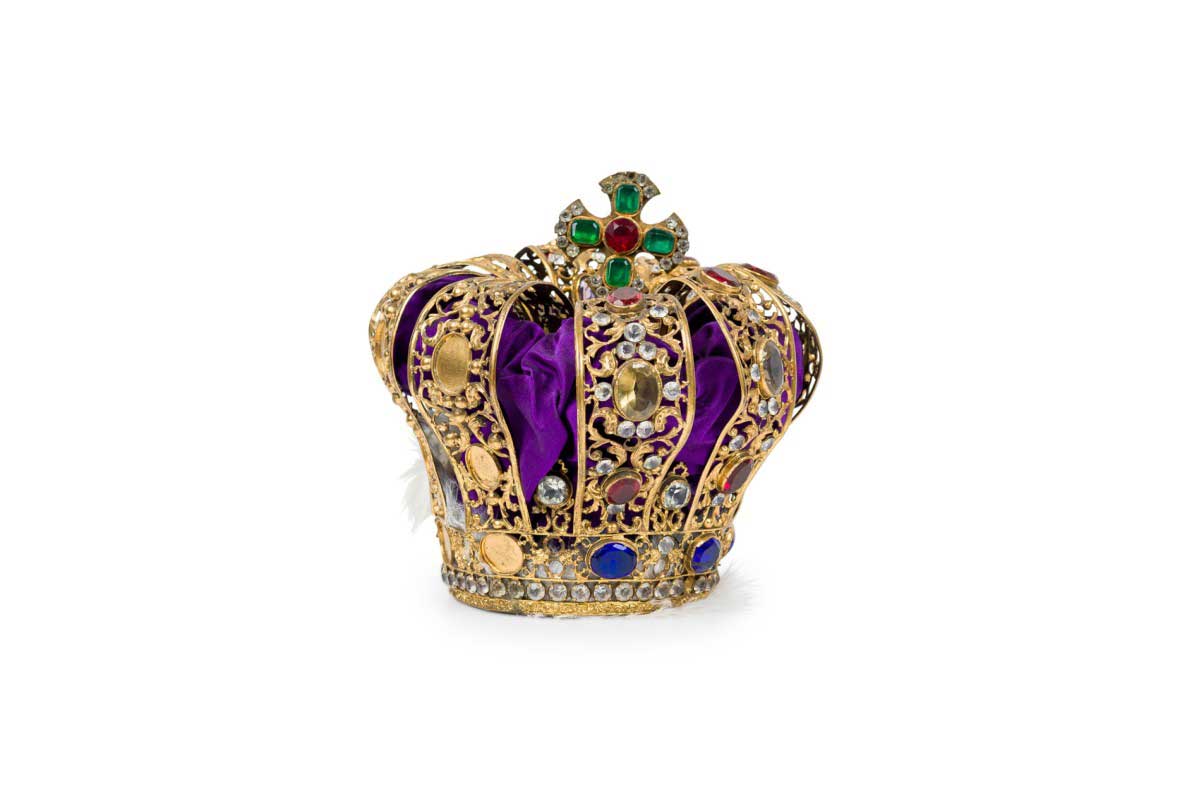X
{{ modalTitle }}
PLEASE FILL IN THE REQUIRED FIELDS.X
X
{{ modalTitle }}
Choose one of the options below.X
ITEM SUCCESSFULLY
ADDED TO PROJECT
French Gilt Filigree Jeweled Purple Crown
 French
French Louis XIV
Louis XIV Architectural/Columns
Architectural/Columns Ornaments/Misc
Ornaments/Misc
Newel Warehouse
32-00 Skillman Ave
Long Island City NY - 11101
 (212) 758-1970
(212) 758-1970
French Gilt Filigree Jeweled Purple Crown

Newel Warehouse
32-00 Skillman Ave
Long Island City NY - 11101
 (212) 758-1970
(212) 758-1970
 Architectural/Columns
Architectural/Columns Ornaments/Misc
Ornaments/MiscLouis XIV
A design period which glorified and enforced the rule of the King of France by the same name between 1643 and 1715. The style includes three distinct periods. The first third of the period drew heavy influence from Italian Baroque design and the style of the previous king, Louis XIII, employing large, masculine, symmetrical forms. Mahogany and oak were favored as materials. As the period continued, the style became more classically ostentatious and decorative and was characterized by large, ornately carved, gilt pieces. The end of the period popularized ironwork and marquetry as finishing techniques, employed a variety of fantastical forms, and included arabesque, coquille, and grotesque designs. This period also saw the popularization of several common furniture varieties, including the commode, console table, and canape sofa, among others.
Filigree
Primarily refers to fine, ornate metalwork (mainly in gold, silver, or copper), that is intricately patterned and used as ornamentation or embellishment, particularly in fine jewelry making. More broadly, the term can refer to any ornamental openwork that is delicate or fine that resembles a metal filigree in its pattern, but in other mediums.
Louis XIV
A design period which glorified and enforced the rule of the King of France by the same name between 1643 and 1715. The style includes three distinct periods. The first third of the period drew heavy influence from Italian Baroque design and the style of the previous king, Louis XIII, employing large, masculine, symmetrical forms. Mahogany and oak were favored as materials. As the period continued, the style became more classically ostentatious and decorative and was characterized by large, ornately carved, gilt pieces. The end of the period popularized ironwork and marquetry as finishing techniques, employed a variety of fantastical forms, and included arabesque, coquille, and grotesque designs. This period also saw the popularization of several common furniture varieties, including the commode, console table, and canape sofa, among others.
Filigree
Primarily refers to fine, ornate metalwork (mainly in gold, silver, or copper), that is intricately patterned and used as ornamentation or embellishment, particularly in fine jewelry making. More broadly, the term can refer to any ornamental openwork that is delicate or fine that resembles a metal filigree in its pattern, but in other mediums.
Louis XIV
A design period which glorified and enforced the rule of the King of France by the same name between 1643 and 1715. The style includes three distinct periods. The first third of the period drew heavy influence from Italian Baroque design and the style of the previous king, Louis XIII, employing large, masculine, symmetrical forms. Mahogany and oak were favored as materials. As the period continued, the style became more classically ostentatious and decorative and was characterized by large, ornately carved, gilt pieces. The end of the period popularized ironwork and marquetry as finishing techniques, employed a variety of fantastical forms, and included arabesque, coquille, and grotesque designs. This period also saw the popularization of several common furniture varieties, including the commode, console table, and canape sofa, among others.
Filigree
Primarily refers to fine, ornate metalwork (mainly in gold, silver, or copper), that is intricately patterned and used as ornamentation or embellishment, particularly in fine jewelry making. More broadly, the term can refer to any ornamental openwork that is delicate or fine that resembles a metal filigree in its pattern, but in other mediums.














